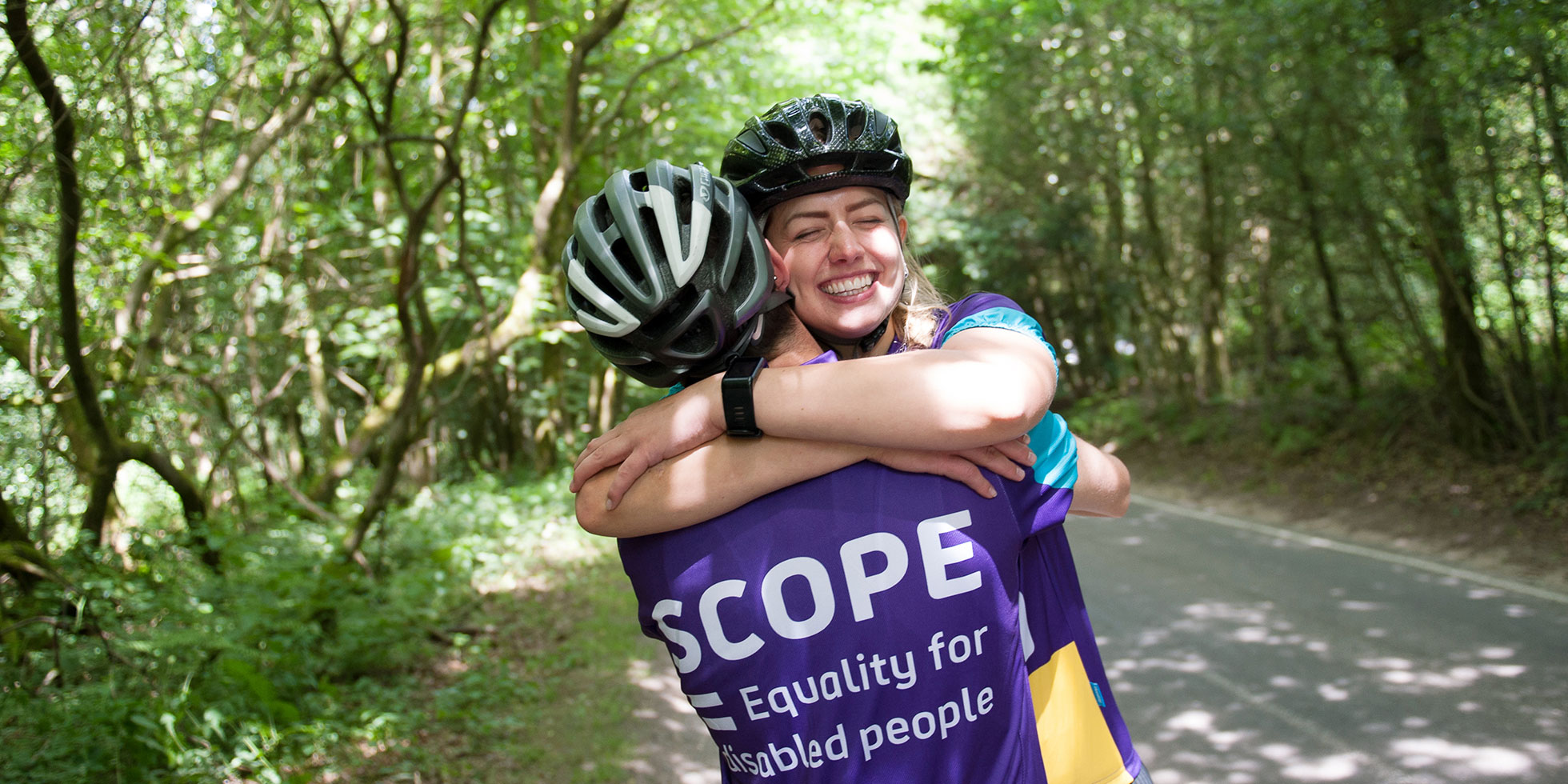A guide to charity branding

Charity branding is more competitive than ever before, as trust in the sector is fragile and more corporate and commercial brands are defining their social purpose. Creating a strong and enduring charity brand takes expertise, education and inspiration, as well as passion, diplomacy and a thick skin.
Read our 10-step charity branding guide exploring everything we’ve learnt over a decade of award-winning charity branding at The Team.
- Charity branding guide: Methodology
A boss once told me that you can’t win a pitch on the basis of a brand development process. But in the charity sector, having the right process is critical to success. At The Team, we guide you through four stages: discover, define, design, and deliver. Firstly, we discover everything there is to know about your audiences, cause, and sector, to unearth key insights. We then use these insights to define a brand positioning that is differentiated. Next, we bring the strategy to life through first-class visual identity design. Before delivering all the assets you need to embed and activate the brand. We’d also recommend you start your brand journey with an audience segmentation in place.
- Charity branding guide: Governance
Because ‘branding’ is most commonly associated with corporate identity design, charity staff and supporters can often be skeptical of the worth of creating a brand. The passion found within charities means resistance to change can be immense. Taking your audience with you is essential and that’s where we excel, involving your people in creating a brand that offers a common sense of purpose, pride and commitment that everyone can get behind. We are called The Team, after all! We strongly recommend creating a Brand Steering Group made up of senior stakeholders and trustees, with whom we can engage at each stage. We’ve always achieved our best results with this in place.
Taking your audience with you is essential and that’s where we excel, involving your people in creating a brand that offers a common sense of purpose, pride and commitment that everyone can get behind.
- Charity branding guide: Brand strategy
The foundations of any strong brand are a clear articulation of what you stand for. This is often called a brand strategy, model or platform. In the charity sector, this was traditionally vision, mission and values. But future brand leaders are now taught purpose (why we exist and the value you create for society), proposition (what you promise to deliver), and personality (how you behave and communicate). The brand strategy informs and inspires the creative expression of the brand – the visual identity and tone of voice.
One of the best ways to grow a charity brand is by connecting with your audiences through shared beliefs and values, so it’s important to express what you believe in. For example, Crimestoppers express their belief that everyone has the right to feel safe from crime, wherever they live.
It is important to research brand development with your key audiences to protect and grow your market share. We prefer to place the research at the strategic positioning stage, using a mix of qualitative research and semiotics. If trustees need more robust evidence we’ll use quantitative research, particularly for brand names and straplines. Find out more about how to avoid ‘design by committee’ here.
The foundations of any strong brand are a clear articulation of what you stand for.
- Charity branding guide: Brand story
Branding is, and always has been, a transfer of emotion. It’s about changing how people feel. But first you need a brand story that people will believe in. A good structure for a charity brand story is a description of the problem you seek to address, your role in providing the solution, and a clear call to action, giving supporters a role in achieving your purpose. A brand story is also a great way to express and explore your brand’s personality. Brain Research UK is one of the favorites we’ve created.
Using human psychology has become increasingly popular in brand development. More brands are asking what emotions they want to provoke to inspire action, drawing on the work of Jaak Panskepp and Paul Ekman, the foremost psychologist in emotional theory. Charities have traditionally drawn upon the core emotions of sadness and fear for direct marketing purposes. Recent years have seen a wave of charities shift towards anger (and fighting talk), led by Cancer Research UK, and now more hopeful narratives, led by Amnesty International.
- Charity branding guide: Culture
Your brand strategy should align with your corporate strategy, which is why many of our brand projects work in tandem or follow corporate strategy development. Once established, it should run through everything you do – from your products and services to your culture and innovation. And marketing communications of course!
One of the reasons we have such a strong track record in the charity sector is our market-leading Employee Engagement offer, which we use to help charities embed new values. This is particularly important to manage risk and avert reputational crisis like Oxfam and Comic Relief. After all, every single interaction somebody has with your brand – and people – will inform their perception of you.
Your brand strategy should align with your corporate strategy, which is why many of our brand projects work in tandem or follow corporate strategy development.
- Charity branding guide: Visual identity
Sadly, many people still only associate branding with logos, rather than as a strategic tool to inspire loyal support. However, a good visual identity is made up of different graphic elements: logo; social media icon; graphic device; colour palette; typography; photography; illustrations; and iconography. Put together with care, they can project your brand’s unique personality.
At the Team, we are proud to champion a movement for more accessible design with disability gamechangers Scope. You can read our guest blog series on accessible design.
We’re also proud to bring commercial design thinking to the charity sector, by creating our Third Sector Excellence award-nominated brands for Scope and Bowel Cancer UK in collaborative ‘design sprints’. To make sure the brand works for all parts of the charity, we select key applications from different departments to apply the visual identity and tone of voice to, carefully managing the need for enough consistency to be instantly recognisable, with enough flexibility to meet the needs of different audiences and purposes. This is one of the greatest challenges of charity branding!
- Charity branding guide: Fundraising
Brand and fundraising have historically had a volatile relationship. When creating a charity brand, it is important to understand how it needs to work to help generate income, whether brand-to-consumer individual giving and specialist direct marketing techniques, or business-to-business government contracts.
One thing we do, is to make sure the photography styles can tell the whole brand story and provoke empathy. The Scottish Catholic International Aid Fund (SCIAF) is a good example. It has three distinctive types of photography: portraits; Scotland in action; and impact overseas. Portraits can be used alongside case studies to help create empathy with dignity and empowerment. Scope’s visual identity also has a style of portraiture photography, specifically for direct response marketing purposes, which was applied to a direct marketing appeal during the brand development.
- Charity branding guide: Activation
Creating your brand is only the start of the journey, because you need to launch it with sustained marketing communications to build awareness, understanding and consideration to gainer support. You will need to think carefully about how much budget you have to target specific audience segments and what response you’d like. Creating a piece of hero film content is popular, and we would recommend asking a media agency for recommendations on media spend with a focus on digital and social. I am still a fan of PR-worthy stunts like CALM Project 84 and split-testing digital fundraising acquisition.
- Charity branding guide: Curation
I have long said the days of the “brand police” are dead. The problem with the term ‘brand management’ is that it suggests a brand is static and a brand manager’s job is to control it (with a stick). We believe you need to curate a brand and evolve it to keep it fresh and to educate and inspire colleagues. It is well worth investing in tools to make this easier, such as a good induction, templates and a brand hub. We’d also recommend you keep your Brand Steering Group in place moving forward to help you monitor the brand’s progress.
- Charity branding guide: Measurement
Finally, you’ll want to measure your impact. This is where people can fall into a trap by trying to shift public awareness figures. Again, track metrics according to key audience segments and in relation to media spend. There are a range of tools on the market from YouGov’s Charity Brand Index to nfp Synergy’s Charity Awareness Monitor.
Get in touch
We have a decade of experience creating successful charity brands, including our revolutionary work with Parkinson’s UK, one of the first charity brands to adopt the attributes of a social movement, which won a Design Effectiveness Award. So, if you’ve got a charity brand challenge, please get in touch.





